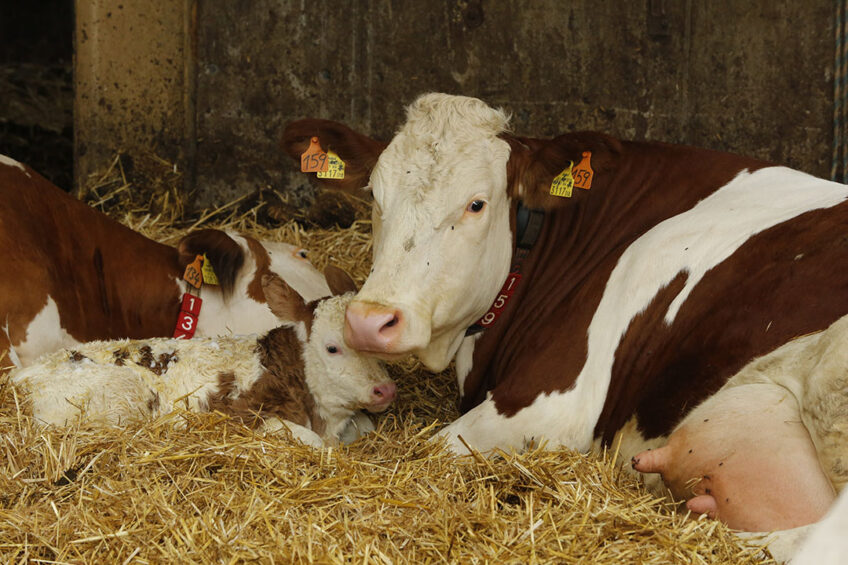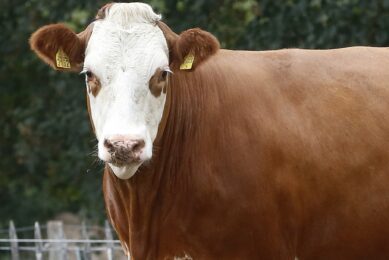Research: New treatments to combat endometritis

We look at the latest research on new treatments for this infection, which causes discharge and fertility problems in dairy herds worldwide.
It’s well known that sub-clinical and clinical post-partum endometritis (CE, infection of the uterus due to E. coli, Trueperella pyogenes and Fusobacterium necrophorum bacteria) can negatively affect dairy cow fertility.
Indeed, the incidence of clinical cases of endometritis among dairy herds can be as high as 40%.
Research is ongoing into various alternative treatments for this condition, as past and present treatments have not proven very effective.

The standby for many years has been to use Oxytetracycline (OTC) or other common antibiotics. However, Mohammad Rahim Ahmadi and colleagues at Shiraz University and Shahid Chamran University in Iran note that intrauterine application of OTC can cause both irritation and further inflammation instead of healing the infection.
Antibiotic residues in milk can also result from this treatment method, and furthermore, these researchers note that the use of intrauterine-administered antibiotics is not currently approved in some countries such as the US.

Antibiotic Reduction Special
Moving away from antibiotics can be challenging and requires a new way of thinking. This section explores the latest methods for raising healthy livestock without the use of preventive antibiotics.
Treatments
The Merck Veterinary Manual confirms that whilst antibiotics delivered to the uterus may cause bacteria in the uterus to be destroyed, they do not reverse inflammation nor generally restore fertility. However, intrauterine infusion of cephapirin antibiotic, “in a form specially formulated for intrauterine use, and available in many countries but not the US, has enhanced fertility in dairy cows with endometritis.”
Treating endometritis with a hormone named prostaglandin F2α (PG) or its analogues has been tried, addressing the idea that cows are more resistant to uterine infection during estrus, but experts agree that PG neither reduces the incidence nor effects of endometritis.
In addition, Ahmadi and his colleagues note that systemic injection of PG leads to the luteolysis (loss of function) of the corpus luteum in the cow uterus.
In 2019, Ahmadi and his team published results of their work on alternatives to the use of PG and OTC. They compared these long-standing treatments with intrauterine infusion of either 50% dextrose solution (DEX, a form of sugar) or liquid paraffin (LP). (They cite previous research where sugar has been shown to inhibit the growth of bacteria, and where LP, delivered to the uterus, seems to cause immune-system cells to move to that organ.)
However, in this study, these scientists found that reproductive performance was significantly lower in LP-treated cows compared with DEX, PG and OTC treatment groups.
But the DEX-treated cows gave results that were quite different. These cows mostly showed no significant difference in reproductive performance after treatment compared to the control group of healthy cows, and therefore Ahmadi and his colleagues consider DEX “a good alternative to antibiotic agents concerning the treatment of CE in dairy cows.”
Also interesting: Nordic countries – Breeding for improved fertility
Other new research
Over the past decade, researchers have also looked at other antimicrobials such as neem, steroidal anti-inflammatories and garlic extracts to treat CE and sub-CE. None of these have been very successful, but some good results have been achieved with ozone (O3).
Various forms of ozone have been shown to act directly on pathogens and also to activate immune system cells. Researchers at the University of Agronomic Sciences and Veterinary Medicine of Bucharest in Romania published results in 2016 investigating intrauterine application of ozone in foam form as a treatment for endometritis, but only measured fertility restoration. It showed some success, with half the treated group of cows pregnant at first service.
However, sometimes low-tech solutions are proven best. Last year, a research team at Alexandria University in Egypt tried comparing ‘local intrauterine moist heat infusion’ to intrauterine-delivered antibiotics for the treatment of sub-CE. Some cows received OTC or 3 other antibiotics (Gentamycin, penicillin and streptomycin) in saline. Still other cows had a small amount of sterile boiling-hot water applied once directly to the uterus.
The latter ‘hot water’ group showed decreases in numbers of leukocytes and neutrophils after 36 hours and also one week post-treatment, indicating infection had reduced. “[This treatment] also gave the highest cumulative pregnancy rate of 83.3%, while other groups using antibiotics or antibiotics with saline gave lower pregnancy rate of 40% and 50% respectively,” the researchers state. “We named this new treatment method ‘Samia-treat’ or SAT.’ SAT is a whole new and effective treatment for cases of ‘repeat breeder’ which are caused by subclinical endometritis in dairy cows.”
Also interesting: 6 management factors to consider in dairy herd fertility
Join 13,000+ subscribers
Subscribe to our newsletter to stay updated about all the need-to-know content in the dairy sector, two times a week.










